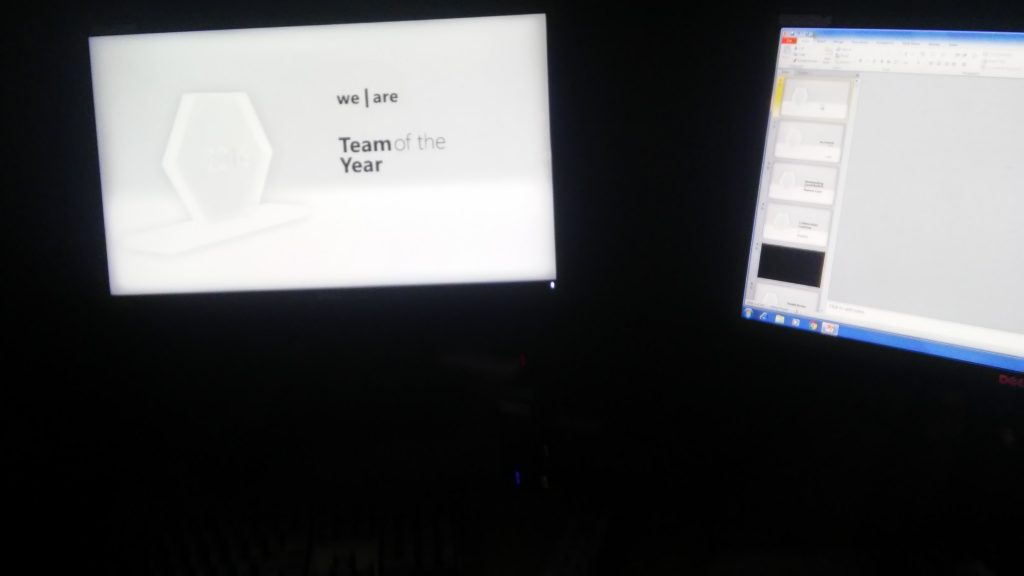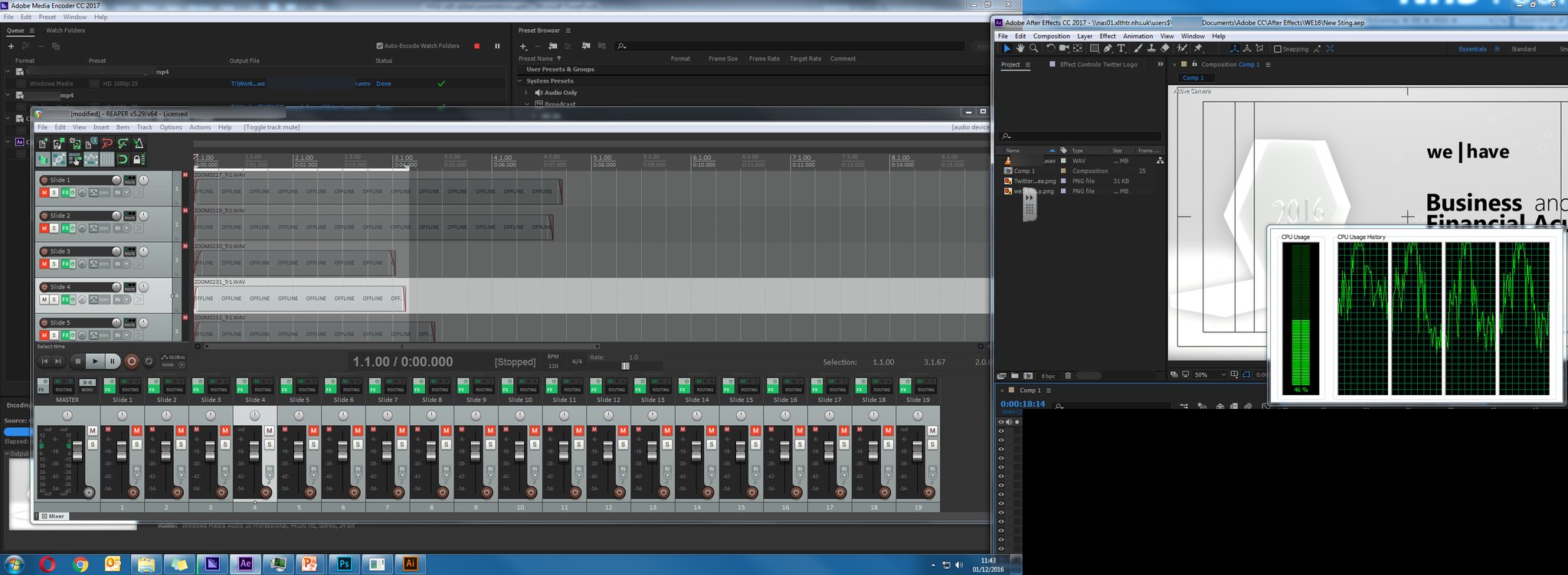Building an Awards Night
Okay, so this post is 2 days late, but to be fair on Friday, I was providing the tech for this very post so it felt fitting to talk about it this weekend whilst it was fresh in my mind.
A Bit of Background
So for those of you who don’t know in my ‘day role’ I work for Lancashire Teaching Hospitals which is an NHS Trust within the UK (a foundation one at that!) under the Blended Learning Team. Being such a big workforce of over 7,000 people and a 24 hour operation it’s impossible to have a single annual point of recognition for the entire trust so a few years ago it was recognised that in addition to the “official” awards made for the Nursing and Clinical Directorates, additional nights for the Strategy and Development Directorate and for Workforce and Education were needed to make people feel included in recognition for all the hard work they do, my directorate being the latter.
Each year, the Worforce & Education, or “WE” awards has gotten larger going from an afternoon in a Lecture Theatre, to a large venue ceremony with dinner and Christmas Party and this year with an added category and special mentions.
The format for the ceremony included a large amount of Multimedia as well as blind collaboration with the DJ (who provided the PA system for the night), the lighting engineer and our Workforce Director who was on stage at the lectern. Our positioning wasn’t the most ideal, being located behind a large rear projection screen hence the term “blind” but was required due to the limitations on cable runs between our control desk and our projector.
My Responsibilities
In previous years I have assisted my line manager and dear colleague David Leech (Audio Visual/IT Development Officer and Multimedia Developer) in the running of these presentations with operations and logistics being my co-responsibility in 2014. In the following year, we agreed on compiling all presentation submissions into a final show, a practice already used in the “official” Trust ceremony known as the annual Quality Awards, which fell to me to generate the framework for. During both of these years, it was also agreed to develop a theme for the AV based content consisting of a looping introductory animation and a matching sting (2014) for each presentation or a theme for the category, nomination and winner slides (2015 onwards). In the first year this was Designed by David Leech using a contemporary Oscars styled curtain (in Blue) and font. The music chosen for this was Hans Zimmer’s piece “Celebrate the Oscars” used at the 84th Academy Awards. The following year our fellow Multimedia Developer Colleague Adrian Hawtin compiled a stylish explosive fluid animation using deep colour and another movie inspired font to the soundtrack of [song to find] from Audio Network. This year, the responsibility was offered to me which I will talk about further in a WAVE Media Post.
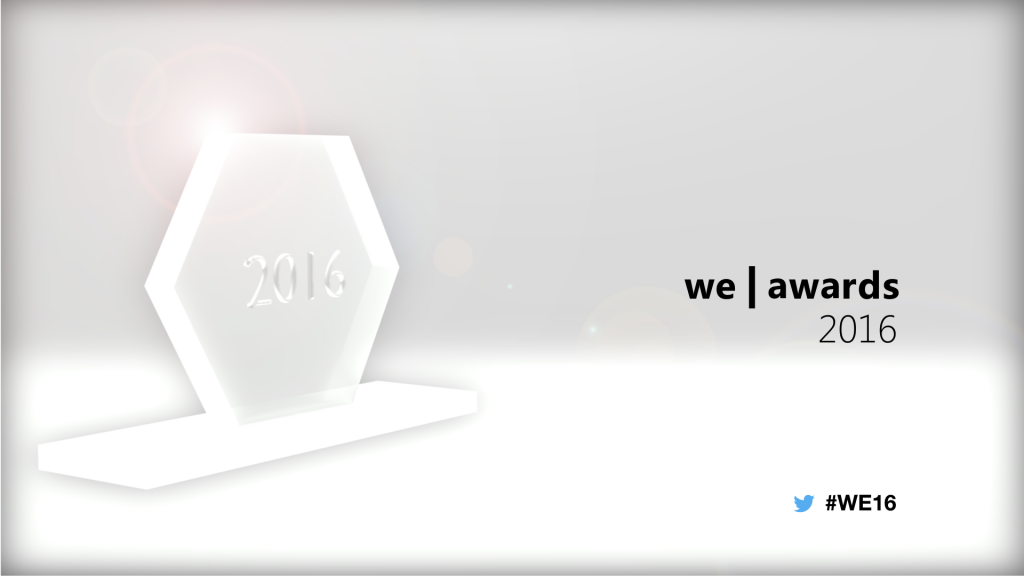
The Hardware
This year we were lucky enough to work with Pure AV and Epson on using their EB-L1300U Laser Projector and to output the vast majority of our content in Full HD with 4k enhancement at the Projector level. Being rear projected, they very kindly also brought along an Ultra Short throw lens to allow for a little breathing space backstage and to allow for fitting on their portable screen.
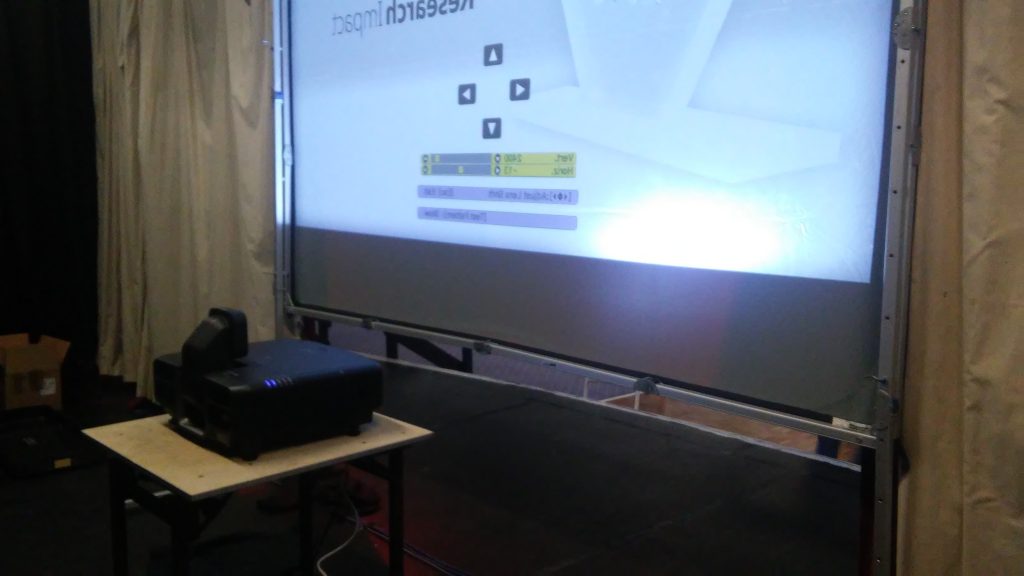
After testing across a number of our computers onsite, we settled with the use of two Dell Optiplex 7040 Micro format PCs, both of which run a customised image of Windows 7 Enterprise and Microsoft Office 2010 as well as the latest version of VideoLAN’s VLC Media Player for fallback use on Multimedia based presentations. Both PCs would be equipped with a local copy of the final file, whilst the main one chosen to run the show would also have the backup of the edited source individual files for each presentation and a second copy of the final file on a secure external hard drive.
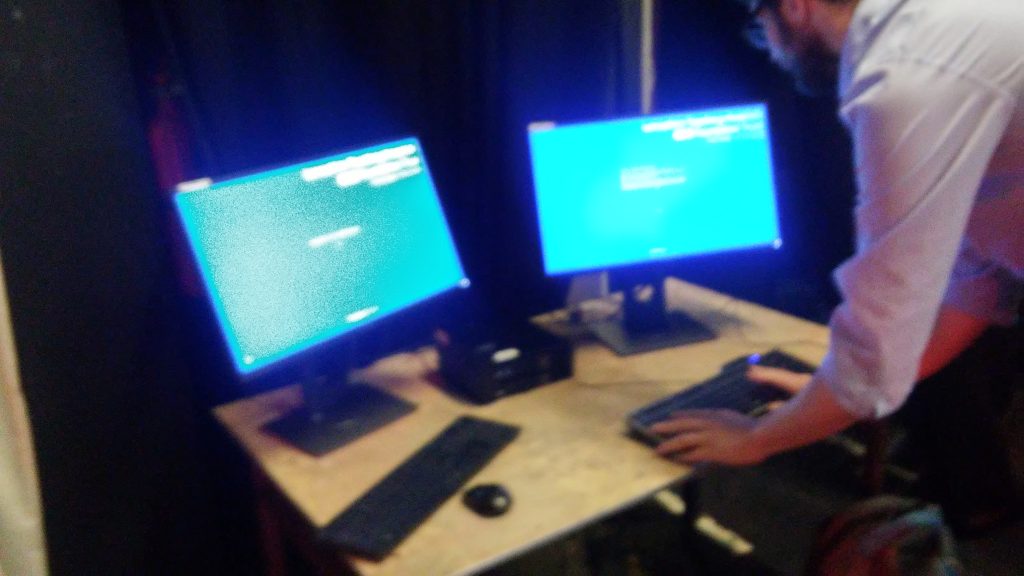
In terms of content, our awards follow the format of 4 finalists being displayed per category with the winner (predetermined) announced on the night. This year further steps were added to create a total of 7 awards and a runner up announced in addition to each winner. A special commendation was awarded to our singer for the night as he provided vocals to this year’s Trust Flu campaign (‘King of the Syringes’ created by college Adrian Hawtin which can be see at the bottom of this article). So as you can imagine, that’s a lot of content to manage and with only computers and projection with no AV management in the middle we needed a simple approach to handle this larger collection of presentations.
We chose Microsoft Office’s PowerPoint in the end as in the past many people have become accustomed to using it was a step up to presenting live and it was one of the few packages we had access to that allowed us to bundle everything into one file for smooth presenting.
Compiling this however was no mean feat. This meant coordinating 28 finalists, all of whom had sent their presentations either as automated PowerPoint slides with a single voiceover or soundtrack (some of which had to be edited to fit their original slides and not overlap into the main presentation ones) and others with individual sound files (which in WAV format added weight to the file) others with self/department created videos in all formats and sizes which were all eventually transcoded to WMV 1080 (25fps) format with varying degrees of initial success and even some created in the web based products Prezi and Powtoon, which in turn needed to be converted into suitable formats for the final show. With some of the voiceovers, various teams had little access to recording equipment whilst others had never created narrated presentations before so our service was extended and rules about using our services for presentations were relaxed to allow us to record and edit this on behalf of those presenters for this year.This whole process took around two and a half to three weeks (including fitting in the edits to our own nomination as a team). In total, the final show consisted of over 230 slides and 2GB of extra mutlimedia content that needed to be embedded and compressed bringing the final size of everything to a little over 1.74GB.
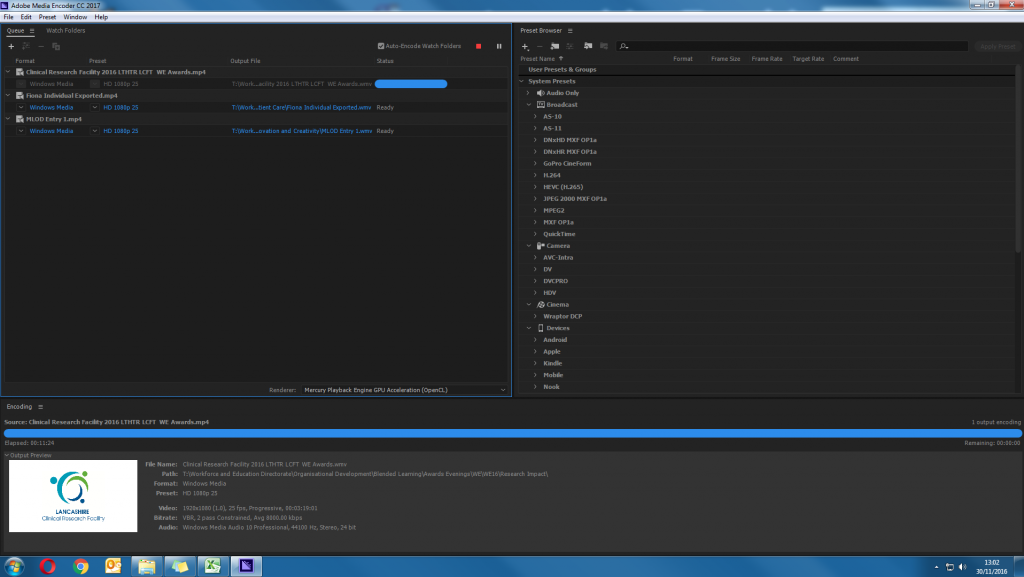
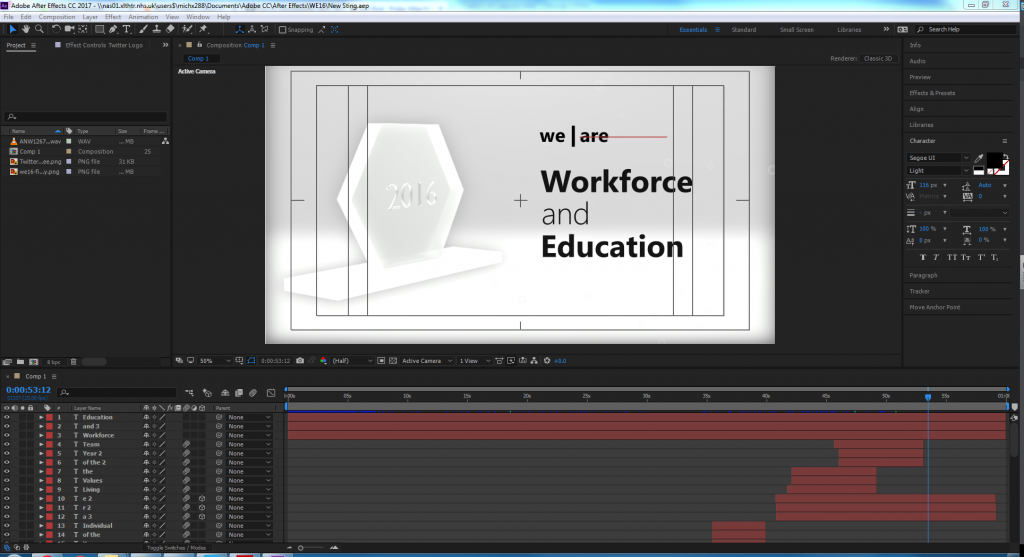
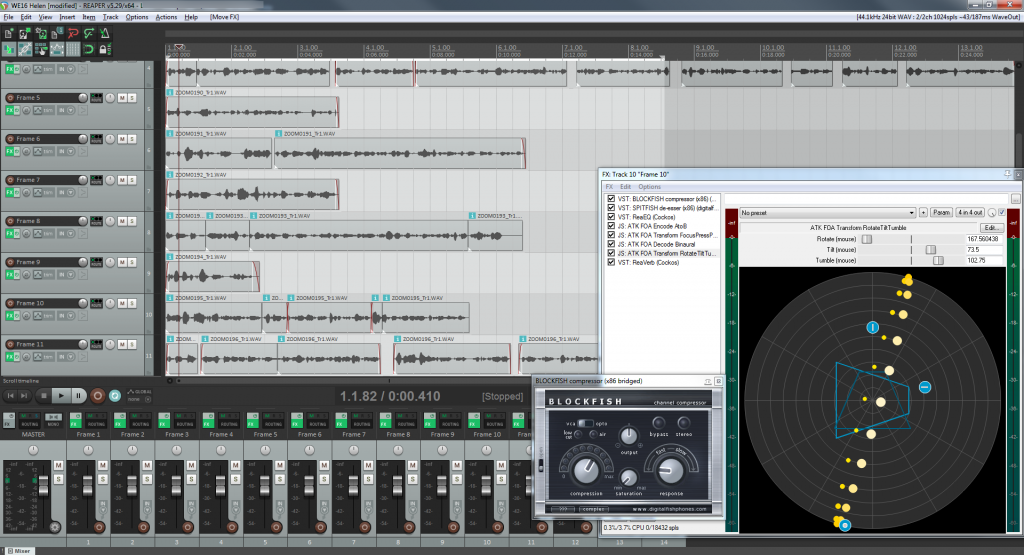
After final compiling we tested the presentation as a whole around 3 times, with 2 full run throughs of all the multimedia and automated slides which is always wise, with the run time being around 100 minutes without breaks things can go wrong or not appear as expected (some of which also didn’t occur until the show itself).
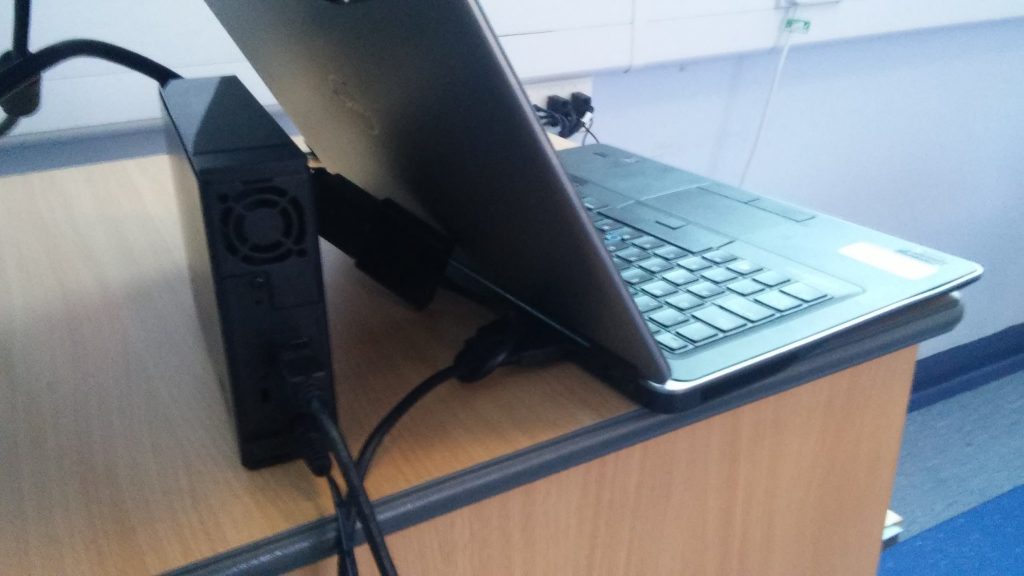
Things We Learned
During the testing itself, it was apparent the final show did crash once during testing and it was apparent this was due to my computer either running out of memory or the CPU spikes from simultaneously transcoding newer versions of files and running a DAW in the background for editing of some final voiceover files recorded on that day. We later found out it was due to the sheer level of content loaded into the single file. This was initially resolved by pausing the presentation halfway through, which wad posssible due to breaking for dinner on the night and freezing a holding slide using the built in feature on the projector. However, even on resuming the show the presentation crashed partway into the second half and a rather rapid change of computers was needed to resolve it. After this issue, it was also apparent that a video had unlinked in saving different version (despite being recompressed and packaged), so we had to revert back to the now recovered first PC with the external Hard Drive on.
A possible resolution for the following year will either be a restructure of the format or the creation of two lighter presentations or individual files and a holding slide, all running simultaneously and the hiring of a vision mixer to navigate between them easily. The con to this though means it would involve extra costs added to an already limited budget. The alternative would be to use a Seamless switcher to alternate between them which would be more feasable under Pure AV or through sourcing one if these events continue to grow or become more frequent.
A second possible thought I can think may be a useful consideration is that of network attached storage. Owing to our tight get in and get out time frame as well as our locked down security on the computers we use, this might be tricky to implement, but would allow us to use a single device for both machines should we require the source files if the embedded ones fail within the main presentation file.
A final suggestion that was made to us was the possibility of installing a Cat6 transmission cable within the suite if we continue to use our current venue (The Best Western/Lavender Park Hall Hotel in Charnock Richard, Lancashire) to allow us to be positioned in a front of house location, which will allow a better view of the screen as well as more visual non-verbal communication between lighting, sound and the presenters on stage.
Coordinating the final show as well as being the behind the scenes recording/mixing engineer and designer of the final theme and introductory animation this year was undeniably a hard undertaking but a thoroughly enjoyable experience and I would certainly be honoured to take on the role again in the future.
